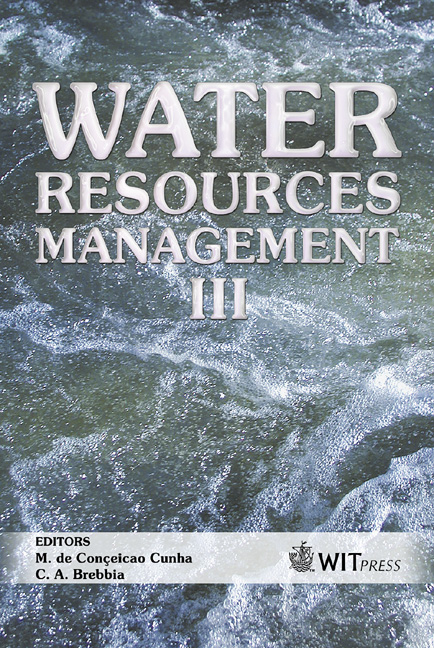Hydrodynamic Cavitation As A Low-cost AOP For Wastewater Treatment: Preliminary Results And A New Design Approach
Price
Free (open access)
Transaction
Volume
80
Pages
9
Published
2005
Size
409 kb
Paper DOI
10.2495/WRM050501
Copyright
WIT Press
Author(s)
Y. Benito, S. Arrojo, G. Hauke & P. Vidal
Abstract
The phenomenon of Cavitation gives rise to a number of interesting physicalchemical effects which can be employed to isolate and oxidize contaminants in water. The micro bubbles generated by pressure pulses inside a liquid act as small reactors, reaching extreme P-T conditions during short periods of time and generating highly oxidant radicals such as OH·. This chemical behaviour is analogous to that of Advanced Oxidation Processes (AOPs). While cavitation generated by ultrasound has proven efficient, reliable and easy to optimise, hydrodynamic cavitation should be studied as a valuable alternative. Although it implies a number of disadvantages in terms of experimental procedures and flexibility, its performance at industrial scales is better. This paper reports the potential of hydrodynamic cavitation as an AOP for wastewater treatment, showing its suitability and efficiency against a wide variety of contaminants (biodegradable, recalcitrant, organic and inorganic) and concentrations, with very low operation costs, simple equipments and no reactants required. The objective is to summon the theoretical and experimental evidence of this potential, constructing the computational tools and the experimental devices which will be used to overcome the uncertainties and optimise the technique. Keywords: wastewater treatment, hydrodynamic cavitation, acoustic cavitation, AOP. 1 Introduction Cavitation consists of the generation, growth and subsequent collapse of gas filled cavities (bubbles) due to pressure pulses inside a liquid bulk [1]. Bubbles
Keywords
wastewater treatment, hydrodynamic cavitation, acoustic cavitation, AOP.





